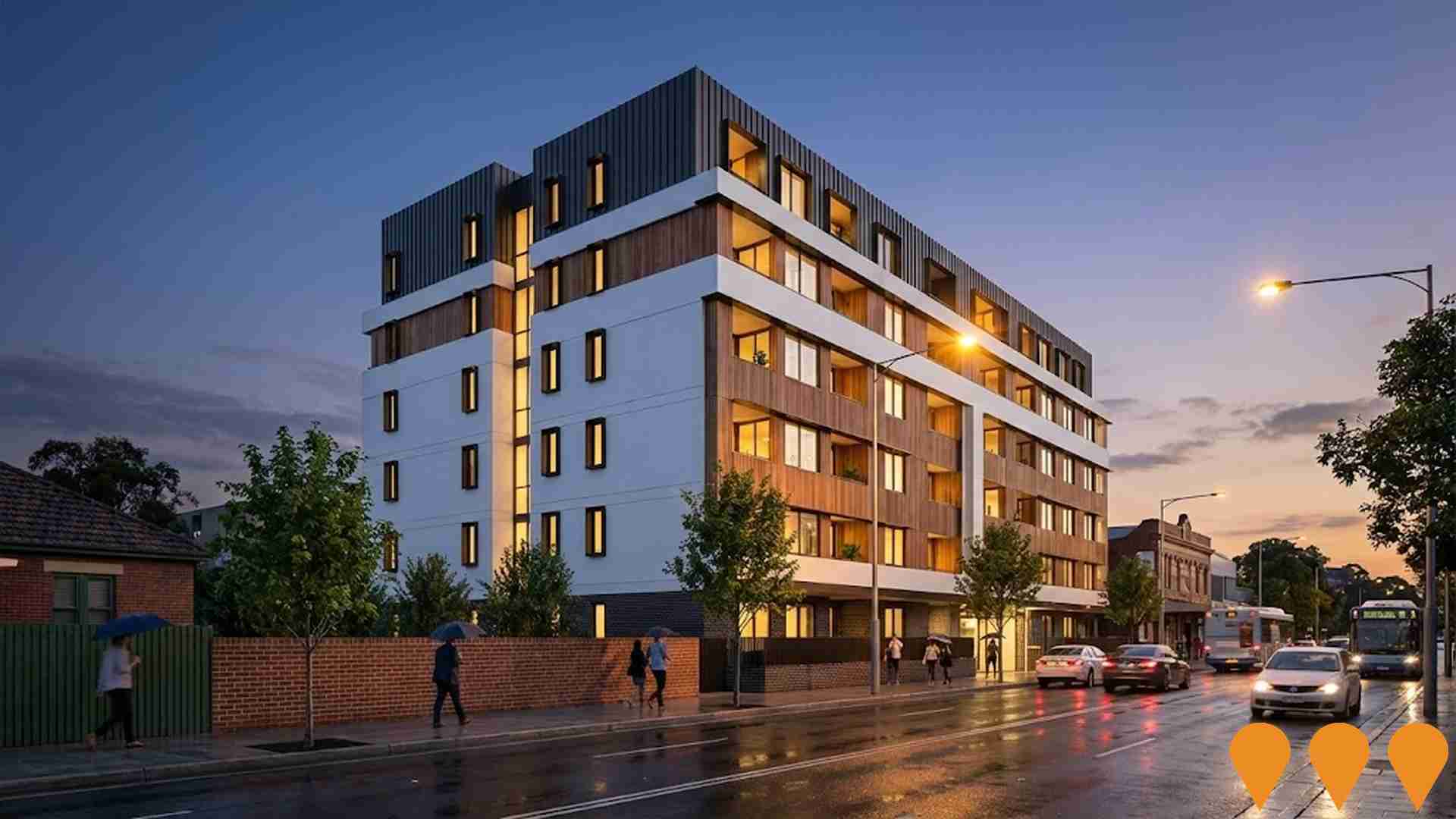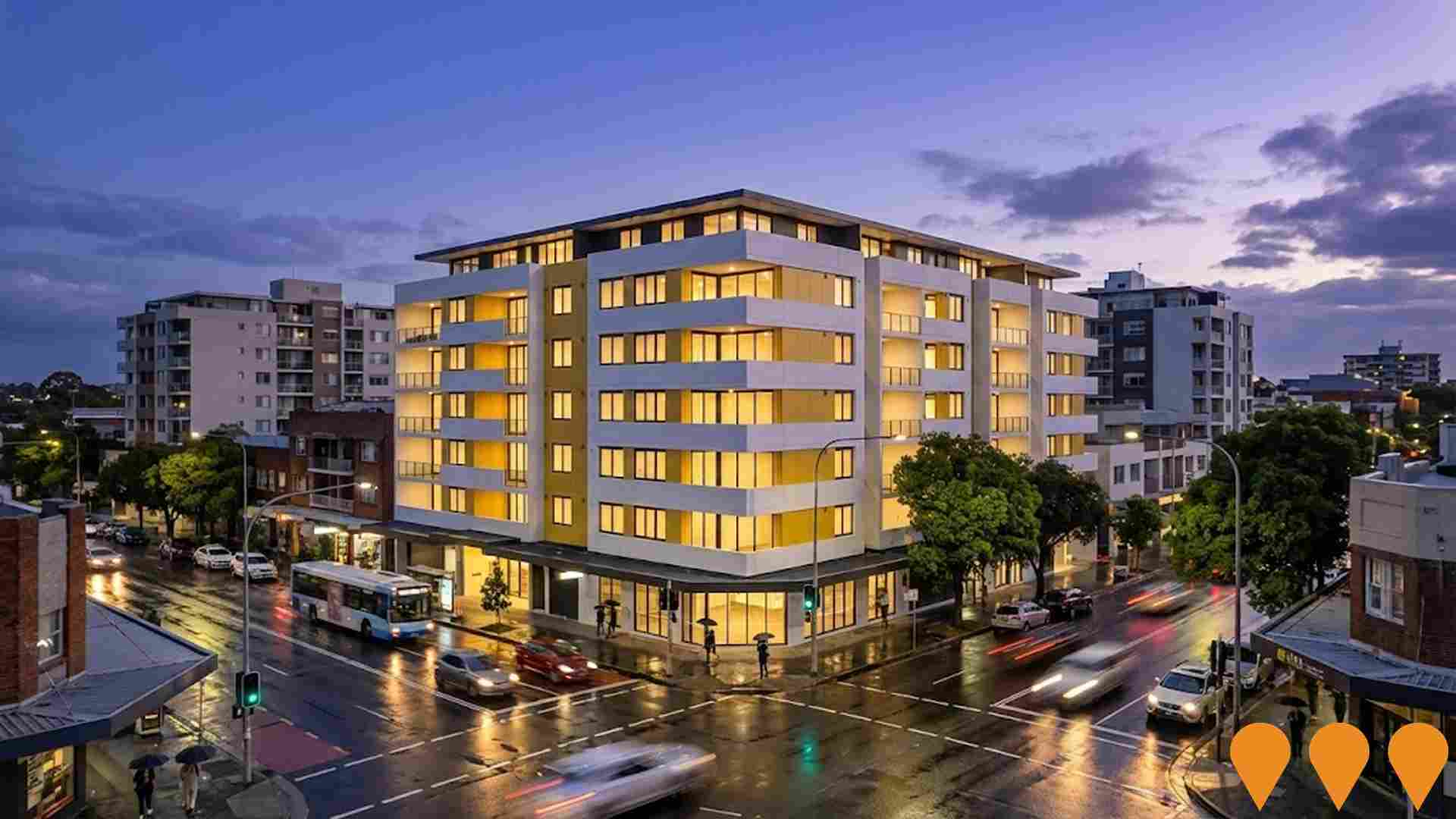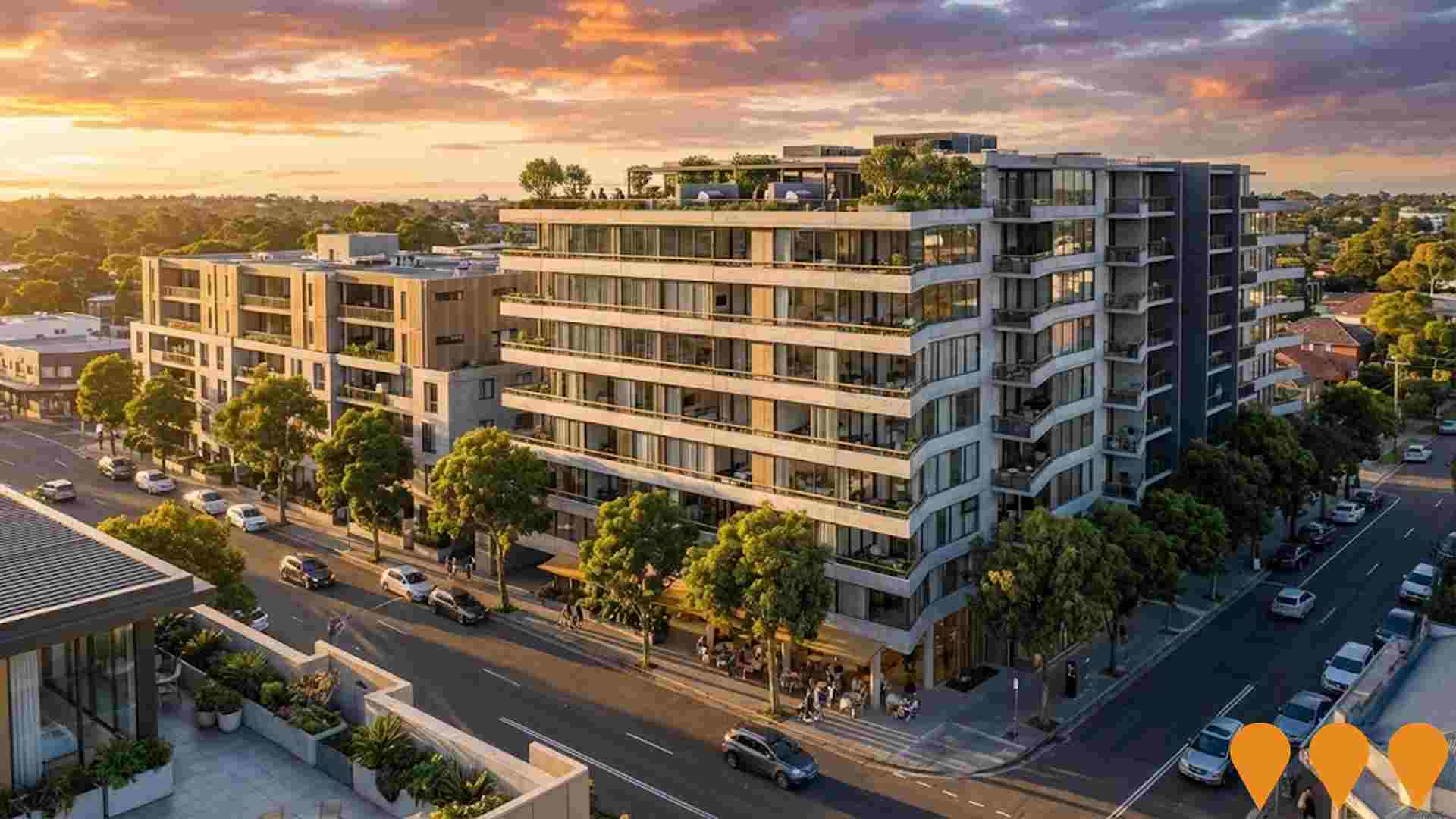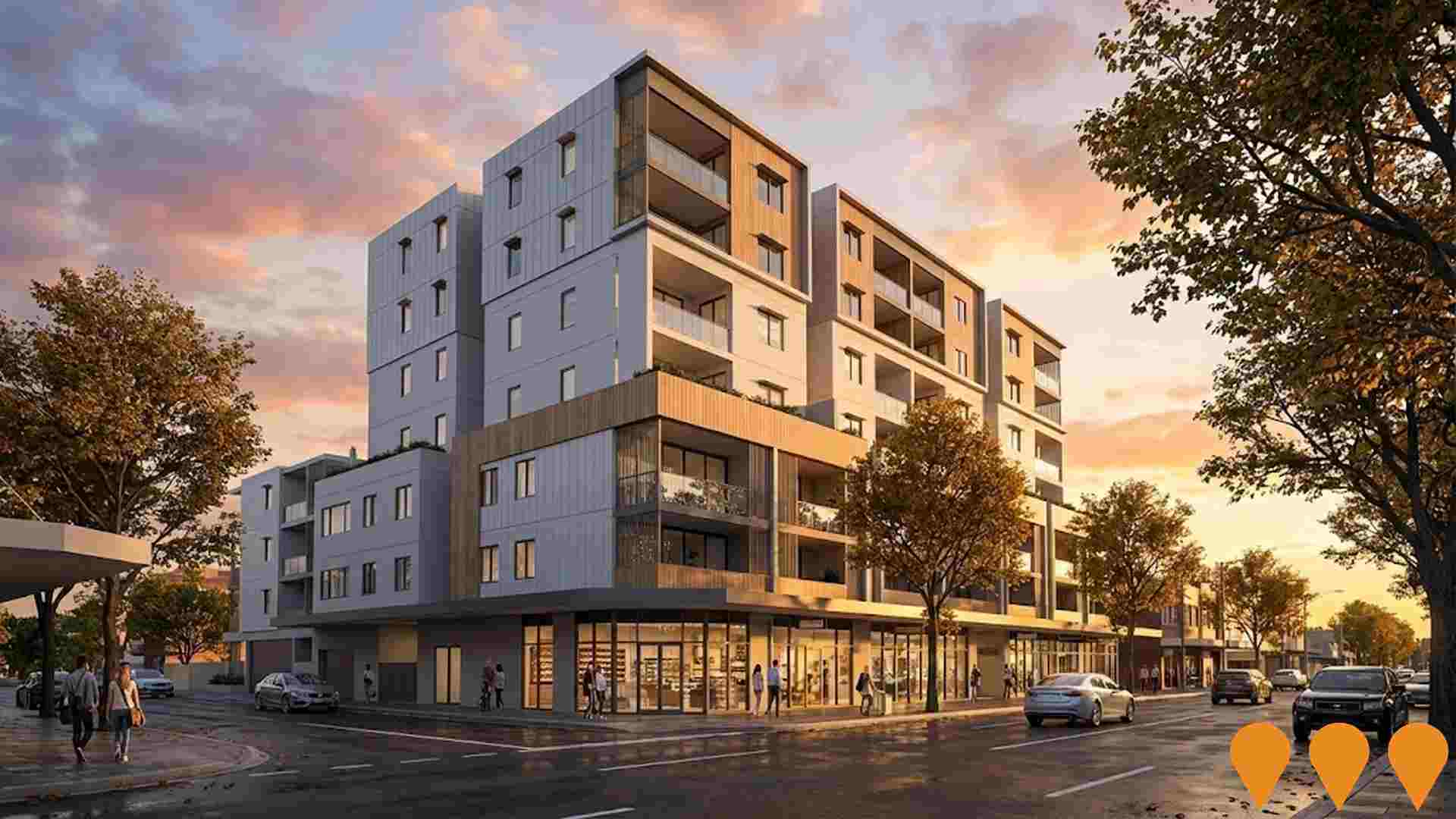Chart Color Schemes
est. as @ -- *
ABS ERP | -- people | --
2021 Census | -- people
Sales Activity
Curious about local property values? Filter the chart to assess the volume and appreciation (including resales) trends and regional comparisons, or scroll to the map below view this information at an individual property level.
Find a Recent Sale
Sales Detail
Population
Bexley - South has shown very soft population growth performance across periods assessed by AreaSearch
Bexley - South's population is approximately 16,380 as of November 2025. This figure represents an increase of 549 people, or 3.5%, since the 2021 Census, which reported a population of 15,831. The change is inferred from the estimated resident population of 16,378 in June 2024 and an additional 18 validated new addresses since the Census date. This results in a population density ratio of 6,111 persons per square kilometer, placing Bexley - South among the top 10% of national locations assessed by AreaSearch, indicating high demand for land in the area. The area's 3.5% growth since the census is within 2.0 percentage points of the SA4 region's 5.5%, suggesting competitive growth fundamentals. Overseas migration contributed approximately 92.1% of overall population gains during recent periods, driving primary population growth for Bexley - South.
AreaSearch adopts ABS/Geoscience Australia projections for each SA2 area, released in 2024 with a base year of 2022. For areas not covered by this data, AreaSearch utilises NSW State Government's SA2 level projections released in 2022 with a base year of 2021. Growth rates by age group from these aggregations are applied to all areas for years 2032 to 2041. Future population trends indicate lower quartile growth, with the area expected to expand by 208 persons to 2041 based on the latest population numbers, recording a gain of 1.3% in total over the 17-year period.
Frequently Asked Questions - Population
Development
AreaSearch assessment of residential development drivers sees a low level of activity in Bexley - South, placing the area among the bottom 25% of areas assessed nationally
Bexley - South has averaged approximately 38 new dwelling approvals per year. Over the past five financial years, from FY21 to FY25, a total of 194 homes were approved, with an additional 7 approved so far in FY26. Despite a decrease in population during this period, housing supply has remained adequate relative to demand, resulting in a balanced market with good buyer choice.
The average expected construction cost value for new properties is $274,000, which is below the regional average, suggesting more affordable housing options for buyers. In FY26, $80,000 worth of commercial approvals have been registered, indicating a predominantly residential focus. Compared to Greater Sydney, Bexley - South has significantly less development activity, 58.0% below the regional average per person. This scarcity typically strengthens demand and prices for existing properties. Nationally, this activity is also lower, reflecting market maturity and possible development constraints.
New building activity comprises approximately 55.0% detached dwellings and 45.0% townhouses or apartments, offering a range of medium-density options across various price brackets. With around 558 people per approval, Bexley - South is considered a mature, established area. Projections indicate that the population will grow by 206 residents by 2041. Based on current development patterns, new housing supply should readily meet demand, providing good conditions for buyers and potentially facilitating further population growth beyond current projections.
Frequently Asked Questions - Development
Infrastructure
Bexley - South has very high levels of nearby infrastructure activity, ranking in the top 10% nationally
Changes in local infrastructure significantly impact an area's performance. AreaSearch has identified 35 projects likely influencing the region. Notable initiatives include 7-11 Kingsland Road Mixed-Use Development, Bexley, Kogarah North Urban Design Strategy Implementation, The Rise, and St George Hospital Redevelopment Stage 3. Below is a list of most relevant projects.
Professional plan users can use the search below to filter and access additional projects.
INFRASTRUCTURE SEARCH
 Denotes AI-based impression for illustrative purposes only, not to be taken as definitive under any circumstances. Please follow links and conduct other investigations from the project's source for actual imagery. Developers and project owners wishing us to use original imagery please Contact Us and we will do so.
Denotes AI-based impression for illustrative purposes only, not to be taken as definitive under any circumstances. Please follow links and conduct other investigations from the project's source for actual imagery. Developers and project owners wishing us to use original imagery please Contact Us and we will do so.
Frequently Asked Questions - Infrastructure
Northern Georges River Submain Upgrade
Critical wastewater infrastructure upgrade to the Northern Georges River Submain (NGRS), a major concrete sewer network in Sydney's south west. The work involves relining and renewing sections of the large-diameter pipeline (up to 2.5m in diameter) due to corrosion from sewage gas (H2S attack). This trenchless technology renewal work is part of a broader, long-term program to increase network capacity in the NGRS and Malabar System, improving system resilience and environmental performance by reducing wet weather discharge and odour emissions.

St George Hospital Redevelopment Stage 3
The $411 million St George Hospital Stage 3 redevelopment is delivering a new Integrated Ambulatory Care Precinct, which includes the 9-storey Kensington Street Building (KSB) with two levels of basement car parking. The KSB reached its highest point in December 2024. The facility will consolidate outpatient services, pathology collection, day rehabilitation, sub-acute and rehabilitation inpatient beds, aged care, acquired brain injury unit (Cognitive Transition Unit), palliative care, surgical services with refurbished operating theatres, enhanced diagnostic imaging, clinical skills centre, day infusion centre, outpatient pharmacy, emergency department expansion, modernised clinical facilities, and improved patient access. The name of the new building was changed from the Ambulatory Care Building to the Kensington Street Building (KSB) in January 2024 to avoid confusion with the existing Acute Services Building (ASB).

Kogarah North Urban Design Strategy Implementation
Strategic urban renewal project transforming 7.6-hectare Kogarah North precinct from low-density residential to high-density mixed-use development. Endorsed by Georges River Council in November 2017, the strategy facilitates coordinated redevelopment with new planning controls allowing buildings up to 33 metres height. Multiple developments approved and under construction including several 10-12 storey residential buildings delivering improved public spaces, enhanced connectivity, and housing diversity as part of Kogarah Strategic Centre.
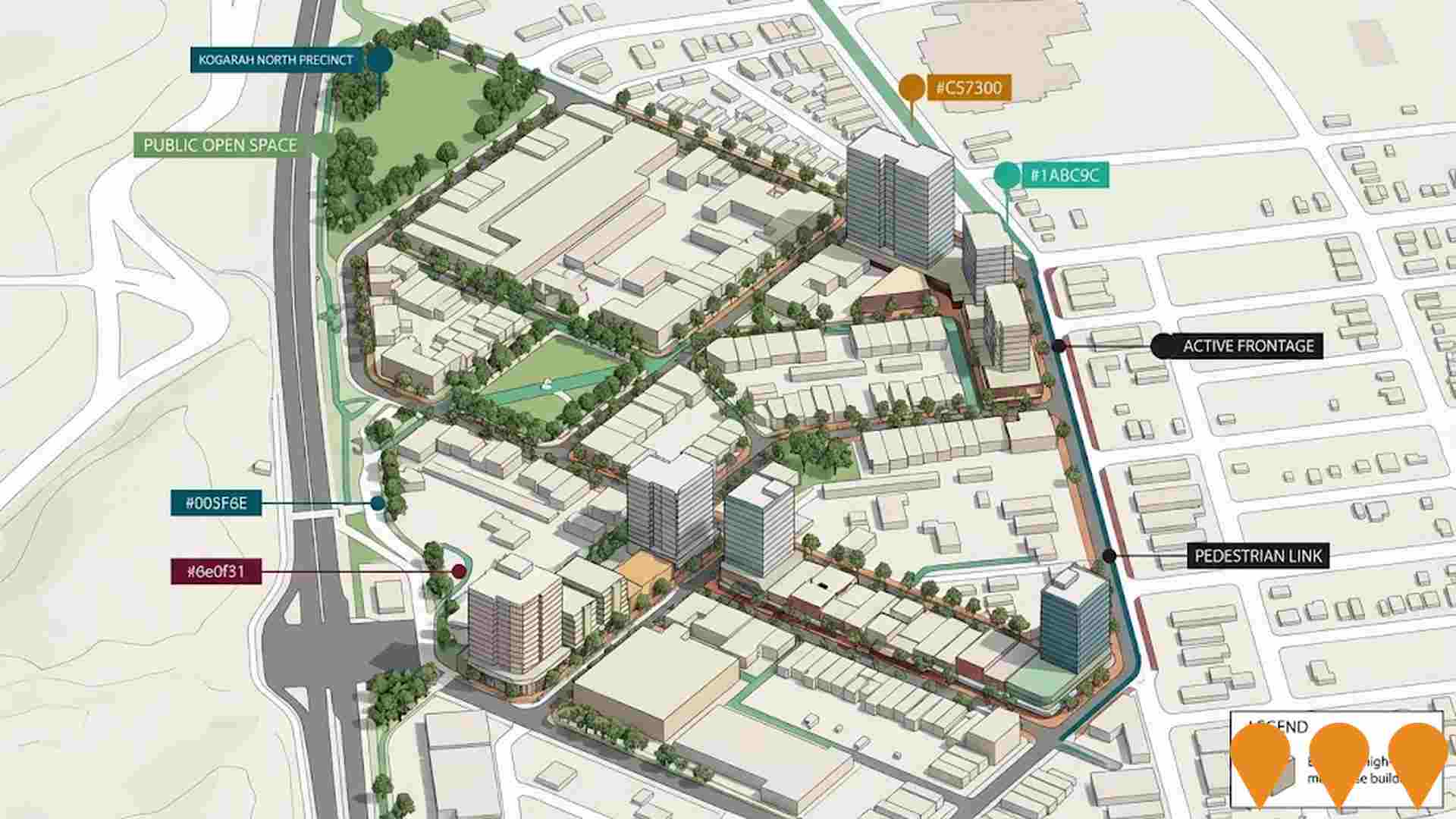
Sydney Water Infrastructure Upgrades
Water infrastructure improvements including pipe replacements, pumping station upgrades and water quality enhancements across the Georges River area.
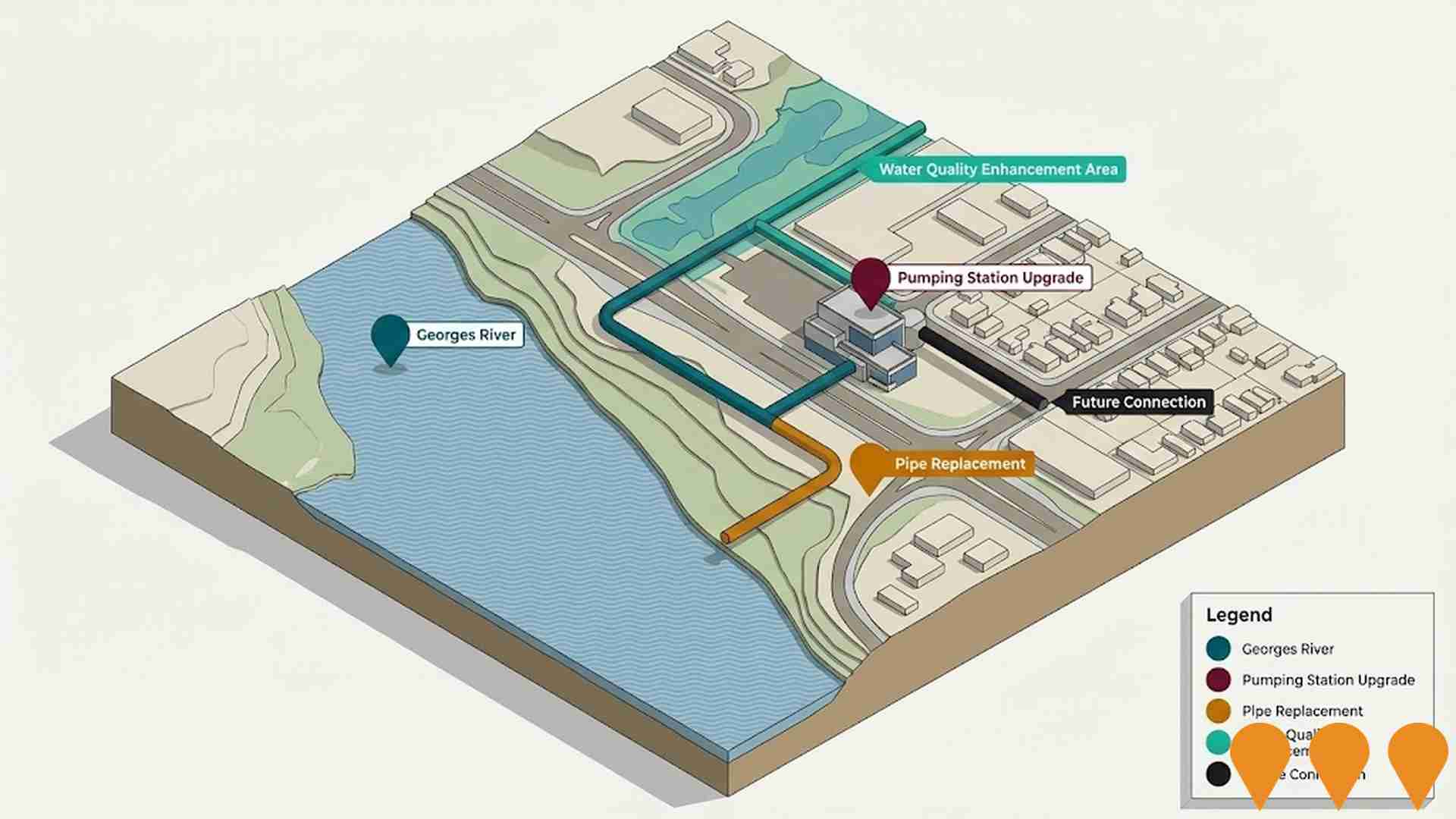
Ganellen Kogarah Town Centre Redevelopment
Proposed redevelopment including three 19-storey apartment towers above Kogarah Town Centre retail complex, with train station upgrade, commercial, retail, and residential components offering over 600 apartments. The specific planning proposal was withdrawn in 2023, but a masterplan for the Kogarah Strategic Centre is under development to guide future growth.

Kogarah Public School Upgrade
The Kogarah Public School upgrade involves constructing a new multipurpose hall, 24 new modern classrooms, outdoor spaces and play areas, a covered outdoor learning area (COLA), and the removal of temporary classrooms. This is part of the NSW Government's investment in public education infrastructure. Planning approval has been granted, the contractor has been appointed, and construction is set to commence in mid-to-late 2025, with an expected duration of 18 months.

Marque Rockdale
58 luxury one, two and three-bedroom designer apartments at 602-608 Princes Highway, Rockdale by Princeton Financial Services. Features rooftop herb garden sanctuary, SOHO commercial spaces at street level, 10-year Latent Defect Insurance, and iCIRT-rated builder Coplex. Includes double-glazed windows, engineered timber floors, Caesarstone benchtops, LED lighting, and pet-friendly design. Only development in Rockdale offering 10-Year Latent Defect Insurance. Completion expected December 2025.
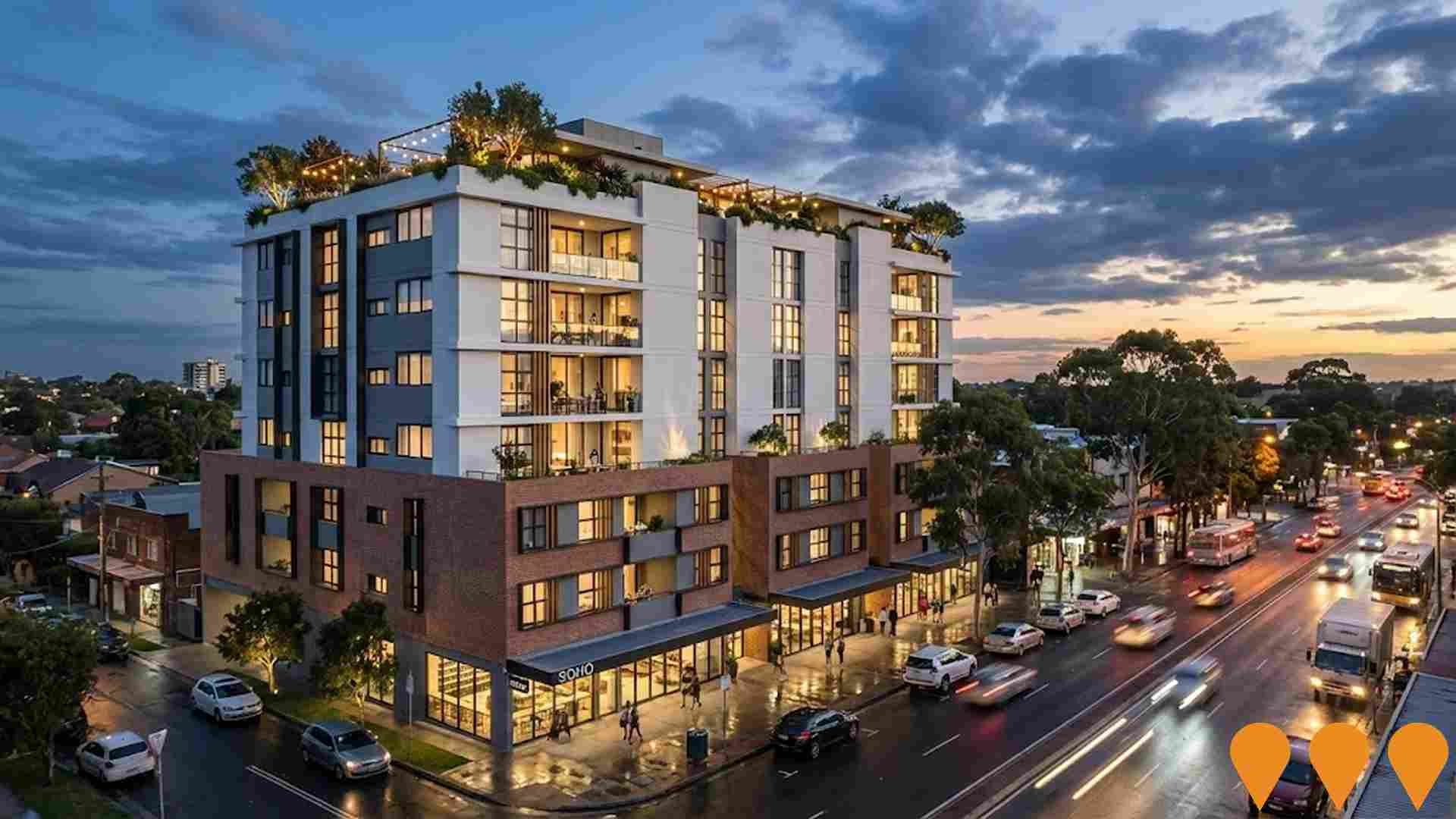
Level 33 Kogarah Bay Development
$35 million mixed-use project on a 10-lot amalgamated site, including 112 apartments in a 10-level tower, with retail and commercial components. Located in Kogarah Bay near the town centre and train station.
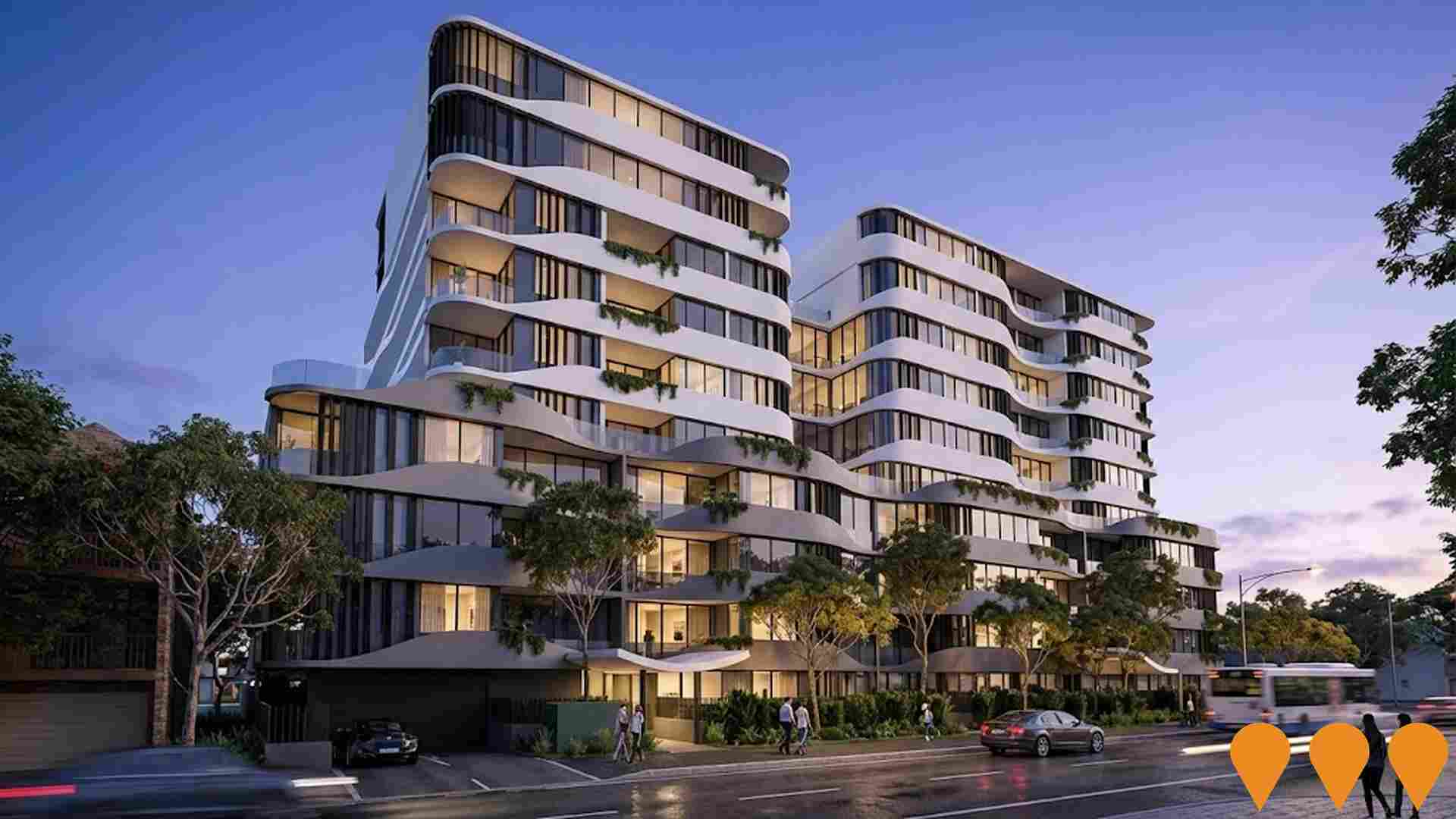
Employment
Employment performance in Bexley - South exceeds national averages across key labour market indicators
Bexley - South has an educated workforce with professional services well-represented. The unemployment rate was 3.0% as of June 2025, below Greater Sydney's 4.2%.
Employment growth over the past year was estimated at 2.3%. In June 2025, 10,026 residents were employed, with a workforce participation rate similar to Greater Sydney's 60.0%. Key employment industries include health care & social assistance, retail trade, and professional & technical services. Retail trade is notably concentrated, at 1.3 times the regional average.
Professional & technical services have limited presence, at 9.5% compared to the regional 11.5%. The area offers limited local employment opportunities, as indicated by Census data on working population versus resident population. Over the year to June 2025, employment increased by 2.3%, while labour force rose by 2.6%, resulting in a slight unemployment increase of 0.3 percentage points. Greater Sydney saw similar trends with employment growth of 2.6% and labour force growth of 2.9%. Jobs and Skills Australia's national employment forecasts from May 2025 project overall growth of 6.6% over five years and 13.7% over ten years. Applying these projections to Bexley - South's employment mix suggests local growth could be approximately 6.8% over five years and 13.9% over ten years, though these are simple extrapolations for illustrative purposes only.
Frequently Asked Questions - Employment
Income
Income levels align closely with national averages, indicating typical economic conditions for Australian communities according to AreaSearch analysis
Bexley South's median income among taxpayers was $51,966 in financial year 2022. The average income stood at $66,416 during the same period. For Greater Sydney, these figures were $56,994 and $80,856 respectively. By September 2025, estimated median and average incomes for Bexley South would be approximately $58,519 and $74,791, based on a 12.61% growth in wages since financial year 2022. According to the 2021 Census, household, family, and personal incomes in Bexley South ranked modestly, between the 38th and 53rd percentiles. The predominant income cohort spanned 33.7% of locals (5,520 people), falling within the $1,500 - 2,999 category. This pattern was also seen in the surrounding region where 30.9% occupied this income range. High housing costs consumed 17.2% of income. Despite this, disposable income ranked at the 52nd percentile, and Bexley South's SEIFA income ranking placed it in the 6th decile.
Frequently Asked Questions - Income
Housing
Bexley - South features a more urban dwelling mix with significant apartment living, with above-average rates of outright home ownership
Bexley - South's dwelling structure, as per the latest Census, consisted of 39.9% houses and 60.1% other dwellings (semi-detached, apartments, 'other' dwellings). This is similar to Sydney metro's composition of 39.8% houses and 60.2% other dwellings. Home ownership in Bexley - South stood at 32.4%, with mortgaged dwellings at 31.4% and rented dwellings at 36.2%. The median monthly mortgage repayment was $2,167, lower than Sydney metro's average of $2,383. The median weekly rent in Bexley - South was $420, compared to Sydney metro's $480. Nationally, Bexley - South's mortgage repayments were higher at $2,167 versus the Australian average of $1,863, and rents were substantially above the national figure of $375.
Frequently Asked Questions - Housing
Household Composition
Bexley - South features high concentrations of group households, with a higher-than-average median household size
Family households account for 73.0% of all households, including 36.0% couples with children, 23.9% couples without children, and 11.4% single parent families. Non-family households make up the remaining 27.0%, with lone person households at 22.4% and group households comprising 4.7%. The median household size is 2.7 people, which is larger than the Greater Sydney average of 2.6.
Frequently Asked Questions - Households
Local Schools & Education
Bexley - South shows strong educational performance, ranking in the upper quartile nationally when assessed across multiple qualification and achievement indicators
The area's educational profile is notable regionally, with university qualification rates of 37.6% among residents aged 15+, surpassing the Australian average of 30.4% and the NSW rate of 32.2%. Bachelor degrees are most prevalent at 24.6%, followed by postgraduate qualifications (11.1%) and graduate diplomas (1.9%). Vocational credentials are also prominent, with 25.6% of residents aged 15+ holding such qualifications - advanced diplomas account for 11.8% and certificates for 13.8%.
Educational participation is high, with 29.9% of residents currently enrolled in formal education. This includes 7.9% in primary education, 7.4% in tertiary education, and 6.6% pursuing secondary education. Bexley - South's 3 schools have a combined enrollment reaching 2,588 students as of the latest available data. The area demonstrates above-average socio-educational conditions, with an ICSEA score of 1083. Educational provision follows conventional lines, split between 1 primary and 2 secondary institutions. School capacity exceeds typical residential needs, with 15.8 places per 100 residents compared to the regional average of 11.4, indicating that the area serves as an educational center for the broader region.
Frequently Asked Questions - Education
Schools Detail
Nearby Services & Amenities
Transport
Transport servicing is good compared to other areas nationally based on assessment of service frequency, route connectivity and accessibility
Transport analysis in Bexley - South shows 83 active transport stops operating. These include a mix of train and bus services. The area is served by 13 individual routes that collectively provide 1,891 weekly passenger trips.
Transport accessibility is rated as excellent with residents typically located 119 meters from the nearest stop. Service frequency averages 270 trips per day across all routes, equating to approximately 22 weekly trips per stop.
Frequently Asked Questions - Transport
Transport Stops Detail
Health
Bexley - South's residents boast exceedingly positive health performance metrics with younger cohorts in particular seeing very low prevalence of common health conditions
Bexley - South's health outcomes data shows excellent results, particularly for younger cohorts who have a very low prevalence of common health conditions.
Private health cover rate is approximately 52%, higher than the average SA2 area (~8,583 people). The most prevalent medical conditions are arthritis (5.2%) and mental health issues (4.9%), with 77.8% of residents reporting no medical ailments, compared to 77.5% in Greater Sydney. Residents aged 65 and over comprise 18.4% of the population (3,013 people), higher than the 16.4% in Greater Sydney. Health outcomes among seniors require more attention than those of the broader population.
Frequently Asked Questions - Health
Cultural Diversity
Bexley - South is among the most culturally diverse areas in the country based on AreaSearch assessment of a range of language and cultural background related metrics
Bexley South is among the most culturally diverse areas in Australia, with 54.8% of its population born overseas and 65.6% speaking a language other than English at home. The dominant religion in Bexley South as of 2016 was Christianity, comprising 47.7% of people. Islam was overrepresented compared to Greater Sydney, making up 12.9% of the population versus 10.3%.
The top three ancestry groups based on country of birth of parents were Other (22.7%), Chinese (15.4%), and Australian (10.3%). Notably, Macedonian was overrepresented at 7.3% compared to the regional average of 3.8%, Lebanese stood at 5.3% versus 5.2%, and Greek was present at 5.3% compared to 8.8%.
Frequently Asked Questions - Diversity
Age
Bexley - South's population is slightly younger than the national pattern
The median age in Bexley - South as of 2021 was 38 years, close to Greater Sydney's average of 37 and equivalent to Australia's median of 38. Compared to Greater Sydney, Bexley - South had a higher proportion of residents aged 65-74 (9.7%) but fewer residents aged 5-14 (9.2%). Between the 2016 and 2021 censuses, the population aged 15-24 grew from 11.9% to 13.5%, while the proportion of those aged 5-14 declined from 10.2% to 9.2%. By 2041, Bexley - South's age composition is projected to change significantly. The number of residents aged 75-84 is expected to grow by 58%, reaching 1,570 from 990. This growth will be led by the aging population dynamic, with those aged 65 and above comprising 85% of the projected growth. Conversely, declines are projected for the populations aged 15-24 and 0-4.
